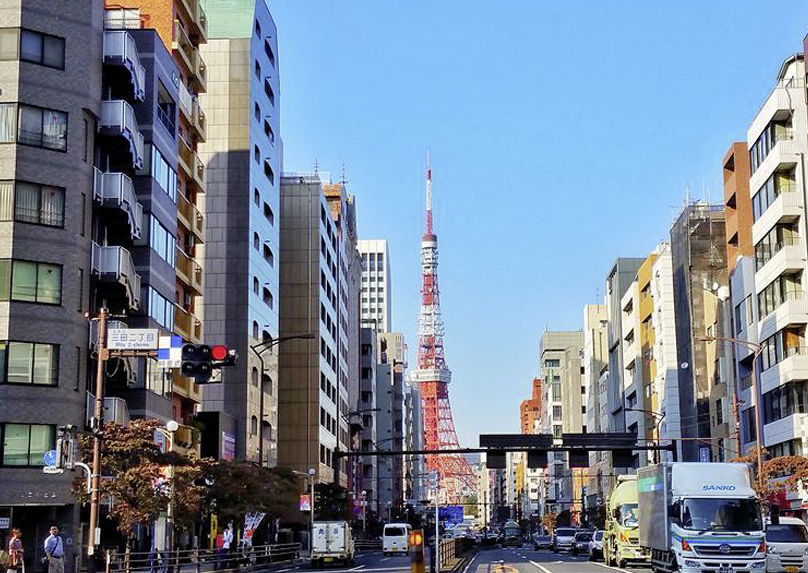
Placement Test, Level Check Tests, Weekly Tests, Midterm Exams and Final Exams = Keio University - Japanese Language Program
University has started once again with the cherry blossom season. You would think that this is the time to go out with friends, to admire the cherry blossoms and to enjoy the warm spring breeze under the bright sunshine. However, leaving aside the fact that it was quite windy and that it has been raining more than I would have liked since the flowers started to bloom, that is not how the students of the Japanese language program at Keio University spend their time at all. The second semester started of with another placement test which lasted three hours.
I think I should go back and tell you about the last semester first. So, when you come to study at Keio University in the Japanese language program, you will have to take a placement test first. The levels will go from 1 to 9 with 1 being the lowest level and 9 being the highest. The placement test is divided into three categories: grammar, listening comprehension and reading comprehension. If I remember correctly, there are 5 pages of exercises you have to solve for each category. If you are not almost as fluent as a Japanese native speaker you won’t be able to solve the exercises on every page. Each page has a different level of difficulty and the last 2 pages were always impossible for me to solve. The first page is always the easiest with the most basic sentences and grammar and then it got a little bit more ‚difficult‘. To me, it seems that it is always either too easy or too difficult, there is no in-between. It is the same with the language lessons.
It stressed me out a lot the first time I took the test, even though I knew that I was actually not supposed to be able to solve everything, since it is called ‚Placement‘ test for a reason, but as soon as I hear the word ‚test‘, I tend to freak out internally.
Last semester’s placement test was around the second week after I arrived in Japan which means that I didn’t have time to really get used to the new environment yet. On the day of the placement test, there was also an opening ceremony in the same room, probably one hour before the placement test, but I forgot about that, because the only thing I could think about was the test. When I was ready to go to university, I met a dorm mate who reminded me of the opening ceremony and at that point I was already stressed out because I knew that I was going to be late. It was humid beyond belief and it was pouring on that day. On top of that, I also got into the rush hour which slowed me down even more. When I arrived at my university, the opening ceremony was already over. I was soaking wet, by the rain and sweat, exhausted and already done with the day. Not the best conditions to take a test. The test results were announced two or three days later. You have to go to the students office, to the Japanese language center, in order to see your results, because your student ID number will be displayed with your level on a board there. Even after taking the placement test, the level check tests, the weekly tests, the midterm exams and finals last semester and passing all of those, I had to do everything all over again this semester, instead of being just placed in a higher level after passing the last exams.
After getting your results you will be having an interview with a teacher who is responsible for your level. I had another interview with my teacher this semester and to be honest I don’t really understand the purpose of this ‚interview‘. I have to commute to university which takes almost 1 hour. I was on time for my interview, but I had to wait another 1 hour, because of whatever reason it took them longer than expected. When it was my turn, I got to see one part of the placement test and a mistake I made. I was told that I can take the level check tests of my level and I was asked whether I had any questions which I didn’t. The interview probably lasted 3 minutes. I travelled 1 hour, waited another 1 hour, just to go home after a 3 min talk which they deemed to be necessary. Furthermore, they ask you to attend a guidance session, which I did the first semester. There was another one this semester and because I was afraid of missing something, I went there and then I regretted it. They explained the exact same things they did during the first semester, that you have to take level check tests, how the language courses are structured, how you register for the courses and so on. We get a booklet and some instructions every semester, where everything is written down, where you can look everything up, so I don’t really understand, why a guidance session is necessary at all, or rather why it is mandatory to go there, especially a second time, when the students knew all the procedures already.
At Keio University the lectures start on a Friday, at least for the Japanese language students. In order to be able to take the courses, you have to take a level check test for each course first. Yes, the placement test is just for you to know which tests of which level you should take. You can’t just register for the courses of the level you were placed in, you also have to pass the level check test first. Let’s say they put you in level 5. Then you have to take the level check tests of every level 5 course you would like to attend. If you think you are more suited for an higher level, level 6 for example, then you also have to take the tests for the level 6 courses. Depending on how many and which courses you would like to take, the first week of university will be consisting of tests and more tests, from morning until the afternoon or the evening. Sometimes there might be two courses during the same period. In order to be able to take two tests during the same period, they split up one period into two parts, so that people can take one test during the first half of the period and the other one during the second half. So the first week, we spend every day running from classroom to classroom, from one building to the other, going up and down the stairs, rushing from one test to the other. We are advised to take as many tests as we can, in case we don’t manage to get into the courses we wanted. It can happen that you won’t have enough courses, either because you failed or because there are too many students wanting to register for that course. In order to finish the program, you need at least 7 language courses. I need at least 8 each semester because of the scholarship program of my home university. There are international courses as well, which are about Japanese culture, society, economy, science and so on. Those are conducted in English. If you study in the Japanese language program, you usually don’t have to register for those lectures, you can if you are interested. However I have to take at least two courses each semester because of the program of my home university.
University life is a little bit different when you study Japanese at a Japanese university, or at least at Keio University. It really depends on the university. At Keio University, your grade depends on attendance, test results, exams and homework. Keio seems to like tests a lot. I don’t know whether the system is the same for every university in Japan. These are my experiences at Keio University only.
Every week, before the lessons begin, you will usually have a dictation, some sort of grammar and conversation test or kanji test, or all of those, which you have to hand in and which then will be graded. You will have a test before every single lesson.
This practice is entirely different, compared to the language courses at my university in Germany, where we don’t have any graded tests, not a single one. We only have one big exam at the end of the semester. On one hand, having one single exam is very stressful, because everything is depending on it, on the other hand, I don’t consider having tests every single day for every single lesson the best solution either. I think every once in a while should be okay, for example once every two weeks. Besides the weekly tests, we also have midterm exams and finals.
At my home institution, the teachers take attendance, however we are allowed to miss a certain number of lessons without being punished. If you get sick, you can just hand in the homework the next time you come to university. At Keio University, we can’t afford to miss a lesson and you don’t really want to, trust me. It is a hassle, seriously.
If we skip a lesson, we have to contact the teacher as soon as possible and we have to retake all the tests from the day we didn’t come to university, plus the tests of the actual day. Sometimes you have to make an appointment to take the tests you missed. Honestly, I think that this is too much. I may blame it on the different cultures, maybe I am just not used to it. However, I have the feeling that we study Japanese in order to pass the tests and exams, not to be able to express ourselves freely, to really communicate with others. We have to follow the examples strictly, we have to learn every single sentence, every written conversation by heart, repeating the exact same words over and over. Don’t get too creative with your sentences, use easy vocabulary, don’t try to do it differently, choose an easy topic to talk about, use the grammar of the level you were placed in, be sure not to make any mistakes. You feel restricted, you feel caged and it is exhausting. Since studying at this university, I learnt to really appreciate what I had back at home. I appreciate my teachers even more than before. I feel really thankful. Thankful that they showed me that learning a language can be difficult, but fun, that there are many different ways of keeping your students entertained and motivated, even if it’s just a Pikachu-stamp on your homework.


